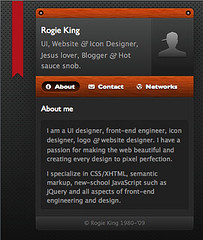The first quarter of this year has seen Google really make tracks with Rich Snippets, which they announced back in May of last year, with microformat implementions popping up in results for all manner of content.
hCalendar
One of the original, and certainly most obviously useful formats, hCalendar has made major head-roads in being adopted across the web as a standardised way to mark-up event information. Those who took the time to add this format to their site are now reaping the benefits, with Google clearly making the most of this rich data.
hRecipe
hRecipe is certainly a relatively young format, but always looked to be a promising starter bringing the timeless interest of geeks and food together.
With a view to make organising your summer BBQs simpler this year, Google have made a major update to their search result pages which now highlight recipes in the results, showing important information such as ratings, cooking and prep times. The information being displayed is formed from extracts of hRecipe marked up data.
Mark Wunsch, a developer for FoodNetwork and Prism parser, who now finds his microformatted recipes displayed on Google search results pages had this to say:
When we revisited our recipe pages on FoodNetwork.com a few months ago, it was one of our priorities in Front End Engineering to embed hRecipe. We knew that it would be only a matter of time for tool support to come along to utilize our recipe data. As Front End Engineers, we have real control over what are pages output, and we have a real opportunity maximize the amount of data that a tool like Google can glean from our markup. It would be a poor practice to not take advantage of microformats when something as powerful as Google recognizes their importance.
There’s further work to do with ironing out the kinks in the hRecipe format, but I think this certainly shows the benefit of being an early adopter and getting these formats out into the wild for real stress-testing. Congratulations to all those involved!
With Google now officially supporting these two formats, plus people and reviews, we eagerly anticipate their further adoption of additional microformats into Rich Snippets.






